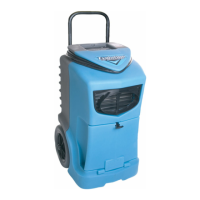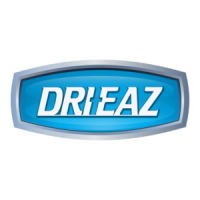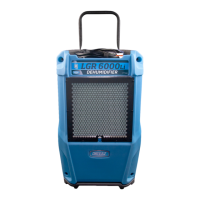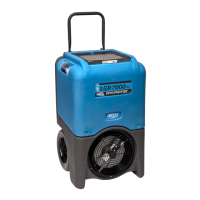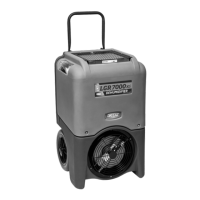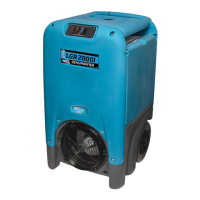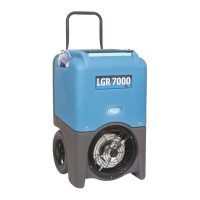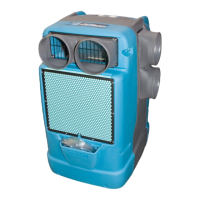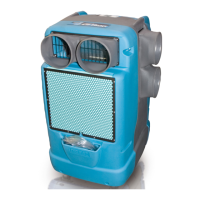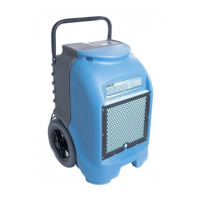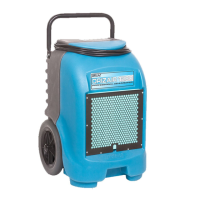07-01480C 2010-01 1 Dri-Eaz Products, Inc.
Owner’s Manual
Evolution LGR Portable Dehumidifier (115V)
DRI-EAZ PRODUCTS, INC.
15180 Josh Wilson Road, Burlington, WA 98233
Phone: 800-932-3030 Fax: 360-757-7950 www.dri-eaz.com
The Dri-Eaz® Evolution LGR dehumidifier reduces humidity in enclosed structural
environments by removing water vapor from the air. The Evolution LGR is engineered to be
rugged, durable and highly portable, making it ideally suited for water damage restoration,
structural drying, construction, and other applications requiring temporary, high-
performance dehumidification.
Patent no. D508735
READ AND SAVE THESE INSTRUCTIONS
SAFETY INSTRUCTIONS
WARNING! Electric shock hazard, rotating fan, hot
surface hazards. Unplug unit before opening cover
for cleaning or servicing. Unit must be grounded.
• Inspect the power cord before use. If cord is
damaged, do not use. Always grasp the plug (not
the cord) to unplug.
• Insert three-prong plug on power cord into a
matching electrically grounded outlet. Do not use
adapter. Never cut off third prong. Do not use an
extension cord.
• The unit must be operated on a 115V/60 Hz circuit
protected by a Ground Fault Circuit Interrupter
(GFCI) device.
• Keep motor and wiring dry. If electrical components
become wet, allow them to dry before using.
• Do not operate in standing water. Do not operate in
rain or snow.
• Do not attempt to repair the unit. For Authorized
Service Centers, call Dri–Eaz at 800-932-3030.
BEFORE YOU BEGIN
Unpacking your unit
Retain all packing material and boxes for possible
equipment returns.
Warranty registration
Visit warranty.drieaz.com to register your purchase.
Registration allows us to better assist you with using,
maintaining or servicing your equipment, as well as to
contact you in case we have important safety information
concerning your Dri-Eaz product. If you determine
service is required, have your equipment model, serial
number and original proof of purchase available and call
your distributor for assistance with obtaining a return
material authorization (RMA).
INTRODUCTION
Dehumidifiers reduce humidity in enclosed structural
environments by removing water vapor from the air. With
proper use, the Evolution can help dry carpet, carpet
pad, floors, walls, building contents and more. Using
dehumidifiers can also help prevent secondary damage
caused by high humidity. For best results, use the
Evolution with Dri-Eaz TurboDryer airmovers placed
around the perimeter of the room to distribute heat
energy and release moisture from wet surfaces into the
air.
How the Evolution LGR dehumidifier
works
Dri-Eaz refrigerant dehumidifiers operate by pulling
moist air in across a very cold evaporator coil. The
moisture in the air condenses on the coil and drips into a
catch basin. The water collects in a tray and is pumped
out through a hose. In certain conditions, the machine
operates in defrost mode, warming any frost
accumulated on the evaporator coil back into water. LGR
(Low Grain Refrigerant) dehumidifiers have better heat
exchange and defrost abilities than regular refrigerant
dehumidifiers, and are able to continue removing
moisture in colder and/or drier environments.
Service Questions: Contact Dri-Eaz at (800) 932-3030
Sales Inquiries: Contact Sylvane at (800) 934-9194 or visit sylvane.com
